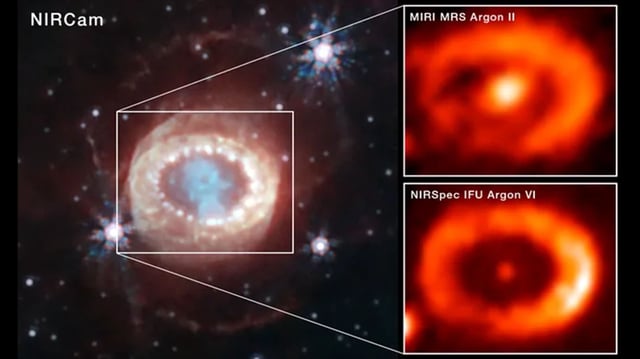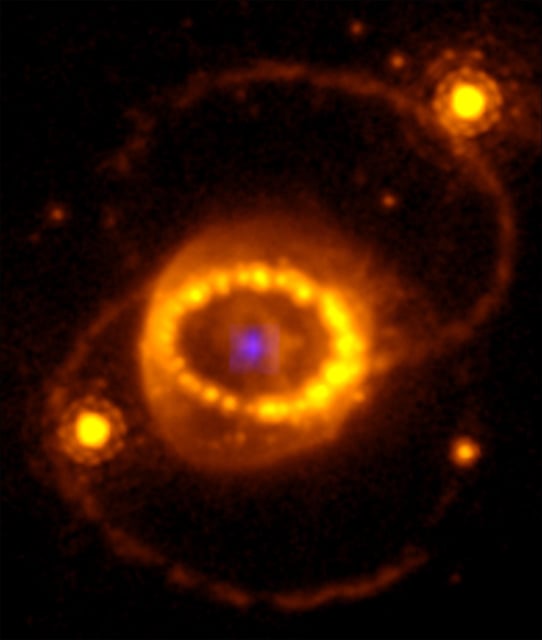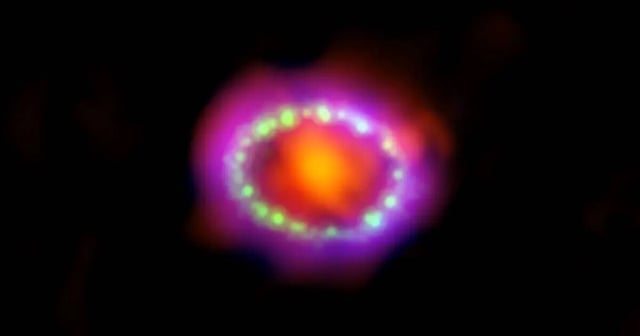Overview
- NASA's James Webb Telescope has discovered a neutron star at the center of Supernova 1987A, providing the best evidence yet for its existence.
- The discovery resolves a long-standing mystery about the aftermath of supernovae, shedding light on the life cycle of stars and the cosmic origins of essential elements.
- Observations revealed ionized argon and sulfur atoms at the core of the supernova remnant, indicative of the presence of a neutron star.
- The neutron star's detection is a significant milestone in understanding the processes underlying core-collapse supernovae and stellar evolution.
- Further observations with the Webb Telescope and other ground-based telescopes are anticipated to provide more insights into the nature of the compact object.



